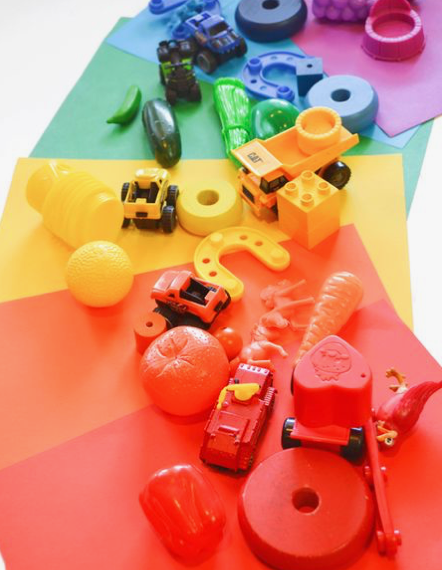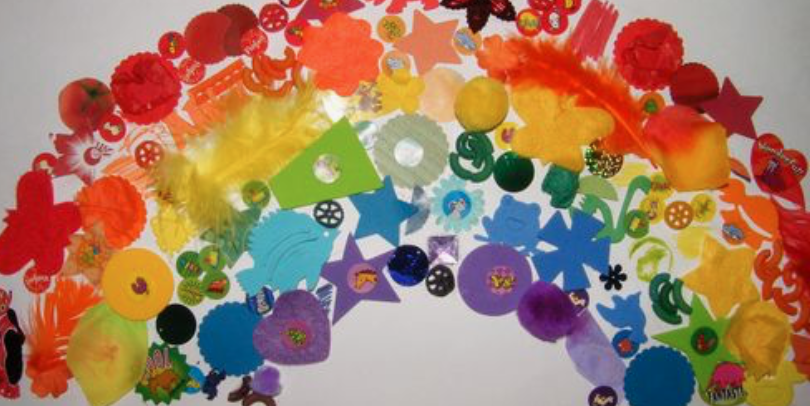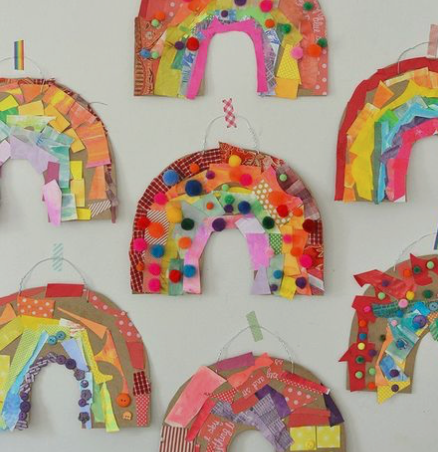What is our theme?
Color Sorting - Mathematics
What is the lesson (overall purpose)?
Sorting colored items
MA Guidelines/Standards:
PK.CC.5 Use comparative language, such as more/less than, equal to, to compare and describe collections of objects.
PK.MD.3. Sort, categorize, and classify objects by more than one attribute.
Learning Outcomes:
Songs, Books & Videos (Motivational Techniques)
https://www.youtube.com/watch?v=p3KRvHbo8yw - Book
https://www.youtube.com/watch?v=QWn7HAxc9p8 - Book
https://www.youtube.com/watch?v=Cm9ZkYTnCNE - SHort “Make Your Own Rainbow” Clip
Materials:
Activity (Procedure):
Activity Wrap Up:
Counting, sorting by color.
How do I know what my child is learning? (Assessment)
The Massachusetts pre-k standards apply to children who are at the end of the preschool age group, meaning older four- and younger five-year olds. In preschool or pre-kindergarten, activity time should focus on two critical areas:
(1) developing an understanding of whole numbers to 10, including concepts of one-to-one correspondence, counting, cardinality (the number of items in a set), and comparison; and
(2) recognizing two-dimensional shapes, describing spatial relationships, and sorting and classifying objects by one or more attributes. Relatively more learning time should be devoted to developing children’s sense of number as quantity than to other mathematics topics.
How can you extend this activity? (Modifications)
See materials above. - You could also cut out cardboard in the shape of a rainbow and create your own rainbow pattern!
Helpful Hints: (Pitfalls & Solutions)
See materials above.
Color Sorting - Mathematics
What is the lesson (overall purpose)?
Sorting colored items
MA Guidelines/Standards:
PK.CC.5 Use comparative language, such as more/less than, equal to, to compare and describe collections of objects.
PK.MD.3. Sort, categorize, and classify objects by more than one attribute.
Learning Outcomes:
- sort everyday materials by various attributes (e.g., size, shape, color, and texture, etc.) and describe their reasoning.
- provide a wide variety of materials and opportunities for children to sort, categorize, or classify everyday materials (e.g., buttons, shells, rocks, pasta, attribute blocks, parquetry blocks).
- read books about sorting and discuss the use of words that describe the attributes of objects.
- select a group of objects with common characteristics and ask children to determine the common attribute (e.g., what is the same about all of them?).
Songs, Books & Videos (Motivational Techniques)
https://www.youtube.com/watch?v=p3KRvHbo8yw - Book
https://www.youtube.com/watch?v=QWn7HAxc9p8 - Book
https://www.youtube.com/watch?v=Cm9ZkYTnCNE - SHort “Make Your Own Rainbow” Clip
Materials:
- Paper
- Coloring tools and/or colored paper
- Bucket/bowl to gather items in
- 10-15 different items around your home
Activity (Procedure):
- Gather materials
- Create a rainbow on your paper with your coloring tools, or have colored paper spread out over the floor or table
- Bring your bucket/bowl around your house and gather 10-15 random items
- Pick one item at a time and sort it by color. Example: place red toy car on the red section of the paper
- When everything you gathered is sorted by color count how many blue items you have, how many red items you have, etc., and see what color has the most items!
- With adult help you can organize this into a graph for the child to see the difference more clear.
Activity Wrap Up:
Counting, sorting by color.
How do I know what my child is learning? (Assessment)
The Massachusetts pre-k standards apply to children who are at the end of the preschool age group, meaning older four- and younger five-year olds. In preschool or pre-kindergarten, activity time should focus on two critical areas:
(1) developing an understanding of whole numbers to 10, including concepts of one-to-one correspondence, counting, cardinality (the number of items in a set), and comparison; and
(2) recognizing two-dimensional shapes, describing spatial relationships, and sorting and classifying objects by one or more attributes. Relatively more learning time should be devoted to developing children’s sense of number as quantity than to other mathematics topics.
How can you extend this activity? (Modifications)
See materials above. - You could also cut out cardboard in the shape of a rainbow and create your own rainbow pattern!
Helpful Hints: (Pitfalls & Solutions)
See materials above.



 RSS Feed
RSS Feed
